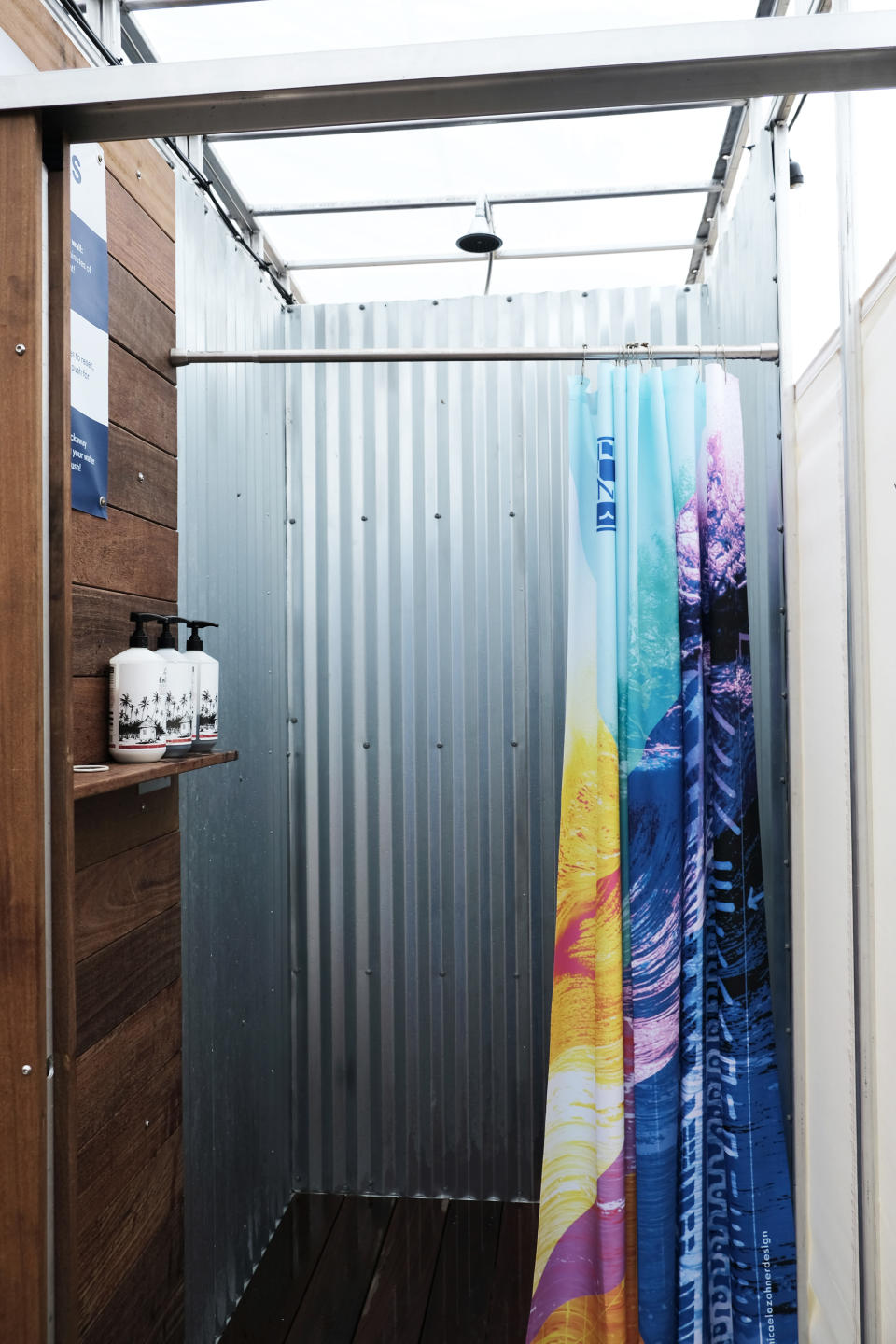What it's like to glamp on New York City's Rockaway peninsula

Many suburban dwellers question why New Yorkers willingly subject themselves to the often squalid, uneconomical, nature-deprived existence of living in the self-proclaimed greatest city in the world. It’s a fair point, as I’ve recently found my patience losing to subway overcrowding and delays in 92% humidity. Glamping is the reprieve du jour to escape the pressure cooker of anxiety that is New York City.
Governor’s Island has attracted a lot of attention since opening its glamp site on June 29, which might explain why there are no weekends available until September 29. So earlier this month, a friend and I took the one-hour ferry ride from the Seaport District to Rockaway Beach to stay at the lesser known Camp Rockaway at Jacob Riis Park in Queens.

Avid surfer and architect Kent Johnson came up with the idea for Camp Rockaway because of his own desire to extend day trips to the beach.
“I used to go out to Rockaway Beach for surfing. When you get two or three days of great waves and you want to spend as much time as possible. I wanted to find a way to stay out there,” Johnson told Yahoo Finance.
So he launched a Kickstarter campaign in 2014, and raised his goal of $50,000. He had a successful pilot over the fall and officially opened for the season on July 2. The site’s twelve decked-out tents will remain open through Halloween.

Johnson, 41, stumbled upon photos of tent communities at Rockaway Beach from a century ago and embarked on a mission to revive what had once been a destination for beachgoers.
While the crowdsourced capital gave Johnson the credibility to take the project to the New York City mayor’s office, the National Park Service has been his biggest ally.
“So far the path of least resistance and most exciting opportunity has been with National Park. They have been wanting to expand camping so this is right up their alley and nothing has happened in the area since the 1970s,” he explained.
While I wouldn’t classify Camp Rockaway as a glamorous experience, it is the perfect marriage of comfort and adventure. But the cost of glamping is quite steep — Friday and Saturday evenings go for $250 per evening and weekday nights are $195.

“We looked at and visited other ‘glamping’ operations around the country, evaluated the amenities, and aligned our pricing with the ones that we felt matched our offerings,” said Johnson.
The safari tents come furnished with a very comfortable queen bed, linens, a wool blanket and two small fans. Each tent has a solar light that doubles as a USB charger that you can connect to any device. The camp also has a clean, private bathroom and showers (toiletries included). A WiFi hotspot is located in the common tent.
The camp is right along the clean and busy beach, but all eateries and bars lining the beach close at sundown. We learned this the hard way. So, be prepared to bring your own snacks. Alcohol isn’t allowed.

In search of some food, we took a 10-minute Uber ride a few miles east to check out Uma’s, an Uzbek restaurant that came highly recommended by Johnson, his cousin Sophie (who manages the Camp during the summer) and The New York Times. We arrived at the restaurant at 9:15 p.m., but it was jam-packed. Most restaurants, including Uma’s, close at 10 p.m. even on weekends(!) so as we were heading to grab a bite at McDonald’s, we stumbled upon a spot called Bungalow Bar. After having dinner we decided to check Bungalow Bar out. At night, the place transforms into a dance club, which was surprisingly fun and eclectic.
After arriving back to Camp Rockaway at around midnight, one of the Camp Rockaway staff kindly started the bonfire for us and we managed to have a few moments of zen before the rain started to fall.
Despite the hail, intense gusts of wind, thunder and lightning, not a single drop of water ended up in our tent. I was thoroughly impressed. My ability to fall asleep, however, was sorely affected.

If the weather gets so bad that the National Park Service closes the park, then Camp Rockaway also shuts down. You can re-book for another night.
Unlike Governor’s Island’s compound which offers 37 tents (ranging from $150 to $500 per night) and is a part of the Collective Retreats, which has five similar properties across Colorado, California, Montana, upstate New York and Texas, Camp Rockaway remains fully independent. (Collective Retreats is founded and backed by former executives of Starwood, raised $10 million late last year.)
Camp Rockaway’s independence adds to its rustic charm. The evening we stayed there, Johnson’s mom and her friend were in town. It felt very communal and engaging. A staff member made a coffee run for us the morning after the storm. To date, 111 guests have stayed in the charming tents, with 90% of them coming from the New York City area.
Camp Rockaway feels like a throwback to the liberating days of attending summer camp as a kid. As I sat on the A train traveling back to Manhattan the next morning, I immediately started daydreaming about my next visit.

Melody Hahm is a senior writer at Yahoo Finance, covering entrepreneurship, technology and real estate. Follow her on Twitter @melodyhahm.
Read more:
26-year-old launches Instagram-fueled fast fashion brand
Inside the exclusive supper club in a 1-bedroom NYC apartment
A father-son duo is revolutionizing this $20B industry one BBQ at a time
Women’s-only club The Wing opens its doors for a special occasion
25-year-old’s startup is making fast fashion even faster
